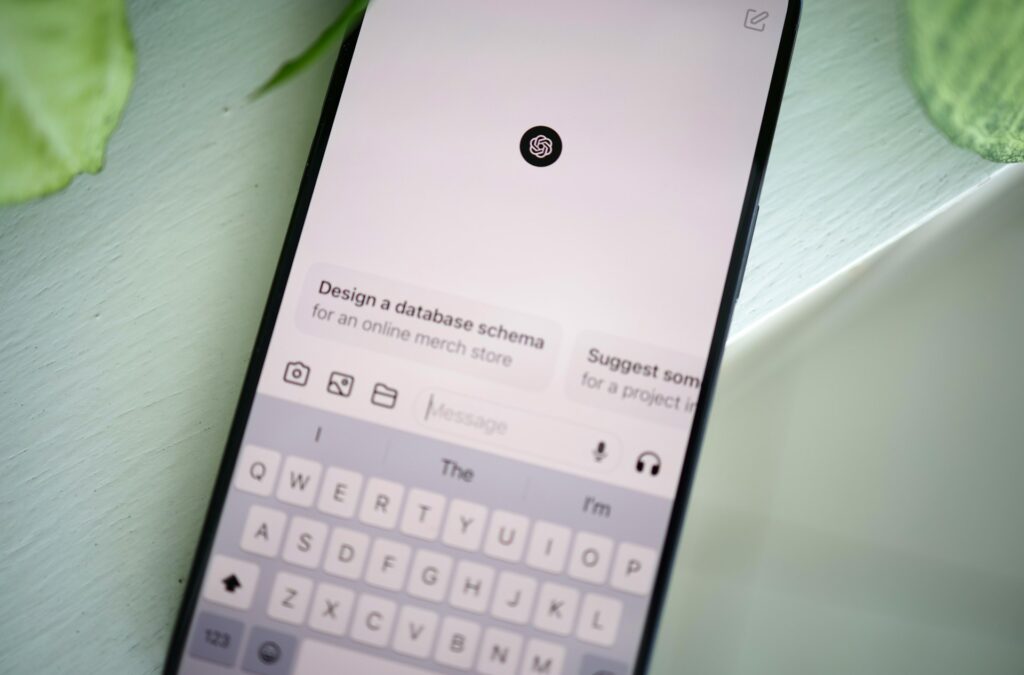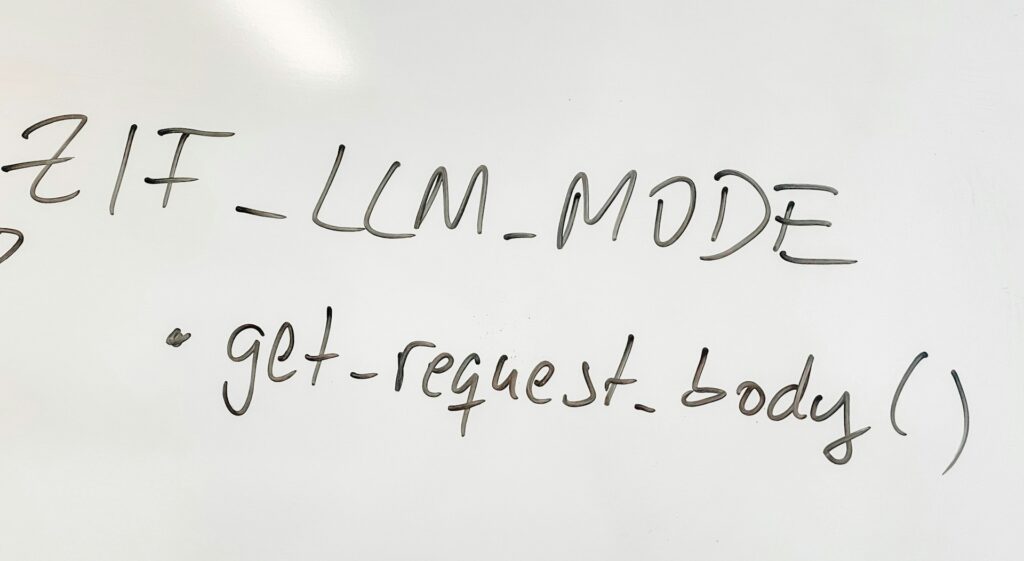You’ve got a great idea. You open up ChatGPT, type in your request, and hit enter. But what you get back is… okay. It’s fine, but kind of generic and a little long-winded. It’s not exactly what you had in mind.
This happens all the time. Most of us are just scratching the surface of what AI like ChatGPT can really do. The issue isn’t the AI. It’s how we ask our questions. When we’re vague, we get average responses. And that often means we end up with something that needs a lot of editing.
But what if just changing three little words could make all the difference? I started playing around with different ways of phrasing my prompts, trying to find something that would consistently get great results. After some trial and error, I discovered what I call the ‘3-word rule’ with ChatGPT-5.
In this post, I’ll show you how to use it, plus give you 10 awesome prompts to try for yourself.
Contents
- 1 What’s the ‘3-Word Rule’ with ChatGPT-5?
- 2 Ready to Try It Out? Here Are 10 Prompts That Show Just How Powerful the ‘3-Word Rule’ Can Be
- 2.1 1. For Business Strategy: Generate, Elevator Pitch, Confident
- 2.2 2. For Content Marketing: Rewrite, AIDA Framework, Persuasive
- 2.3 3. For Technical Understanding: Explain, Analogy, Simple
- 2.4 4. For Productivity: Summarize, Key Takeaways, Concise
- 2.5 5. For Creative Brainstorming: Brainstorm, Mind Map, Whimsical
- 2.6 6. For Legal Clarity: Simplify, Contract Clause, Clear
- 2.7 7. For Social Media: Draft, Tweet Thread, Engaging
- 2.8 8. For Career Development: Critique, Resume Bullet-points, Professional
- 2.9 9. For Health & Wellness: Create, 7-Day Meal-Plan, Encouraging
- 2.10 10. For Learning a New Skill: Teach, Step-by-Step, Patient
- 3 Why This Simple Trick Gets You Better ChatGPT Responses
- 4 Your Turn to Master the ‘3-Word Rule’
What’s the ‘3-Word Rule’ with ChatGPT-5?

The ‘3-word rule’ is a simple method that gives clear and precise instructions to ChatGPT. It follows a basic structure you can easily remember: Verb + Format + Tone.
By combining these three elements, you create a clear blueprint for the AI, guiding it to give you exactly what you want. No more generic or off-target answers. Let’s break it down.
1. The Verb (The Action)
The first word in your prompt is the action. It tells the AI exactly what to do. If you start your prompt with vague phrases like “tell me about” or “write something on,” you’re leaving things too open-ended.
Instead, choose a strong action verb that directs the AI clearly. Think of it as the core task the AI needs to accomplish. Examples include:
Analyze, Generate, Rewrite, Summarize, Critique, Explain, Brainstorm
2. The Format (The Structure)
The second word defines how you want the output to look. This is where you avoid the rambling, unorganized paragraphs that ChatGPT sometimes spits out.
By specifying a format, you guide the AI in structuring the information exactly how you want it. Think of it as providing a container for the response. It helps keep things organized and easy to digest. Examples include:
Table, Bullet-points, Elevator Pitch, Tweet Thread, Mind Map, Code Snippet, Dialogue
3. The Tone (The Persona)
The third word sets the tone or the personality of the response. It tells ChatGPT how to sound. Should it be formal or playful? Persuasive or neutral? The tone helps the AI match the right voice for the context you need.
You can think of it like asking the AI to wear a certain “hat” when responding. Examples include:
Confident, Critical, Persuasive, Simple, Encouraging, Professional, Whimsical
Example Time

Let’s say you want to explore the pros and cons of a four-day workweek.
- Before Prompt: “Explain the pros and cons of a four-day work week.”
- Expected Output: A generic, balanced list that you’ve probably seen before.
Now, let’s apply our new technique.
- After Prompt (Using the Rule): “Analyze, SWOT Table, Critical.”
- Expected Output: A clear SWOT analysis (Strengths, Weaknesses, Opportunities, Threats), with a critical tone focusing on the potential downsides.
The difference is night and day. The ‘3-word rule’ with ChatGPT-5 forces clarity, context, and constraint. These are the three keys to unlocking high-quality, specific, and useful AI-generated content.
Also see: I Found a Faster, Smarter Way to Delete Myself from the Internet – And It’s Almost Too Easy
Ready to Try It Out? Here Are 10 Prompts That Show Just How Powerful the ‘3-Word Rule’ Can Be

These 10 versatile prompts are designed to show off the flexibility of the ‘3-word rule’ across different areas. Each one will help you get high-quality results with minimal effort—perfect for boosting your productivity.
1. For Business Strategy: Generate, Elevator Pitch, Confident
Use Case: Need a quick, impactful pitch for a new business idea or project? This prompt will help you craft a compelling, concise elevator pitch that gets straight to the point.
It’s ideal for clarifying your thoughts before meetings or updating your LinkedIn profile. The result is focused on delivering your core value confidently.
2. For Content Marketing: Rewrite, AIDA Framework, Persuasive
Use Case: Got a dry product description that needs some life? This prompt will transform it into a powerful marketing message using the AIDA (Attention-Interest-Desire-Action) framework.
It’s perfect for turning basic content into persuasive, eye-catching copy.
3. For Technical Understanding: Explain, Analogy, Simple
Use Case: Struggling to explain a complex tech topic to a non-technical audience? Use this prompt to break down challenging concepts (like blockchain, APIs, or quantum computing) with a simple analogy. The goal is to make tricky ideas easy to understand for everyone.
4. For Productivity: Summarize, Key Takeaways, Concise
Use Case: Need to digest a long article, a complicated report, or a messy email thread? This prompt will turn it into a set of essential bullet points. It’s a massive time-saver for anyone who needs to get to the point quickly without missing any key details.

5. For Creative Brainstorming: Brainstorm, Mind Map, Whimsical
Use Case: Looking for creative ideas for a project, story, or event? This prompt will help you generate out-of-the-box ideas while keeping them organized in a mind map format. The whimsical tone encourages ChatGPT to think outside the usual constraints and provide unconventional, fun ideas.
6. For Legal Clarity: Simplify, Contract Clause, Clear
Use Case: Need to understand dense legal language? This prompt will break down complicated contract terms or terms of service documents into plain, simple language. It’s perfect for quickly grasping the key points of an agreement without getting lost in the legal jargon.
Disclaimer: This is for informational purposes only and isn’t legal advice.
7. For Social Media: Draft, Tweet Thread, Engaging
Use Case: Want to craft a compelling multi-tweet thread for platforms like X? This prompt will help you tell a story or explain an idea across several tweets, each one optimized for engagement.
The AI will organize your thoughts into bite-sized chunks, with a hook and a closing thought that leaves a lasting impact.
8. For Career Development: Critique, Resume Bullet-points, Professional
Use Case: Want your resume to stand out? Use this prompt to get feedback on your resume’s work experience section. The AI will analyze your bullet points and suggest ways to make them more action-oriented and impactful, using professional language that catches the eye of recruiters.

9. For Health & Wellness: Create, 7-Day Meal-Plan, Encouraging
Use Case: Need help with meal planning? This prompt will generate a simple, balanced 7-day meal plan tailored to your health goals. The “Encouraging” tone adds a supportive touch, making the meal plan feel like a helpful guide rather than a strict regimen.
Also Read: 9 ChatGPT Hacks That Make You Work, Think, and Create Like a Pro (Unlock Its Full Potential)
10. For Learning a New Skill: Teach, Step-by-Step, Patient
Use Case: Ready to learn something new? Whether it’s coding in Python or mastering a new guitar chord, this prompt will guide you through the process with step-by-step instructions.
The “Patient” tone ensures the AI takes its time to break down complex ideas into easy-to-follow steps, perfect for self-paced learning.
To make these even easier to use, here is a quick reference table.
Goal
3-Word Prompt
Best For…
Business Strategy
Generate, Elevator Pitch, Confident
Pitching new ideas quickly.
Content Marketing
Rewrite, AIDA Framework, Persuasive
Turning facts into compelling copy.
Technical Topics
Explain, Analogy, Simple
Making complex subjects easy to grasp.
Productivity
Summarize, Key Takeaways, Concise
Distilling long documents to their essence.
Creative Ideas
Brainstorm, Mind Map, Whimsical
Generating and organizing unique ideas.
Legal Documents
Simplify, Contract Clause, Clear
Understanding complex legal text.
Social Media
Draft, Tweet Thread, Engaging
Creating shareable content for X/Twitter.
Career Growth
Critique, Resume Bullet-points, Professional
Improving your resume’s impact.
Health & Wellness
Create, 7-Day Meal-Plan, Encouraging
Building healthy habits with support.
Skill Acquisition
Teach, Step-by-Step, Patient
Learning new skills with clear instructions.
Why This Simple Trick Gets You Better ChatGPT Responses

It might seem like a small change, but the ‘3-word rule’ with ChatGPT-5 is incredibly effective. This trick works because it directly addresses how large language models (LLMs) process and understand prompts.
Breaking down your request into clear, simple components gives the AI the clarity and direction it needs to perform at its best.
- Overcoming the “Curse of Knowledge”
As humans, we often know exactly what we want, but we don’t always realize how vague our requests can be. We might assume the AI understands the context we’re thinking of, but that’s not always the case.
The 3-word rule forces us to break down our request into three key elements: action, structure, and tone. By doing this, we’re giving ChatGPT exactly what it needs to deliver a precise, tailored response.
- Harnessing the Power of Constraints
LLMs have a massive “possibility space” of potential answers for any given prompt. The more vague the question, the more the AI has to guess what you’re really asking for. And often, it lands on the most common or average response.
The 3-word rule changes that. By adding specific constraints (verb, format, and tone), you’re narrowing down that possibility space and guiding the AI to a much more accurate, high-quality result.
- Tone as Advanced Role-Prompting
The “Tone” part of the rule is a form of role-prompting. Basically, assigning the AI a persona. Whether you need the response to be “Critical,” “Encouraging,” or “Professional,” the AI pulls from patterns and vocabulary associated with that role.
This makes the response more nuanced and contextually relevant. It’s a simple way to get the AI to think and respond in a much more sophisticated, tailored manner.
Your Turn to Master the ‘3-Word Rule’
We’ve all experienced those generic AI responses that feel just a little off. More often than not, they come from equally generic prompts. The ‘3-word rule’ with ChatGPT-5 is the fix.
By structuring your requests using a simple Verb + Format + Tone, you’re giving ChatGPT the clarity, constraints, and context it needs to generate truly exceptional results.
But this isn’t a rigid formula. Think of the ‘3-word rule’ as a flexible framework for your creativity. Experiment and find what works best for you. Mix and match different verbs, formats, and tones to build your own library of powerful prompts.
For example, what happens when you try:
- “Debate, Dialogue, Sarcastic” to explore an argument?
- “Invent, Recipe, Enthusiastic” for a fun culinary challenge?
The possibilities are endless!
So, what’s the first prompt you’re going to try using the 3-word rule? Drop your best combinations in the comments below. I’d love to see what you come up with!